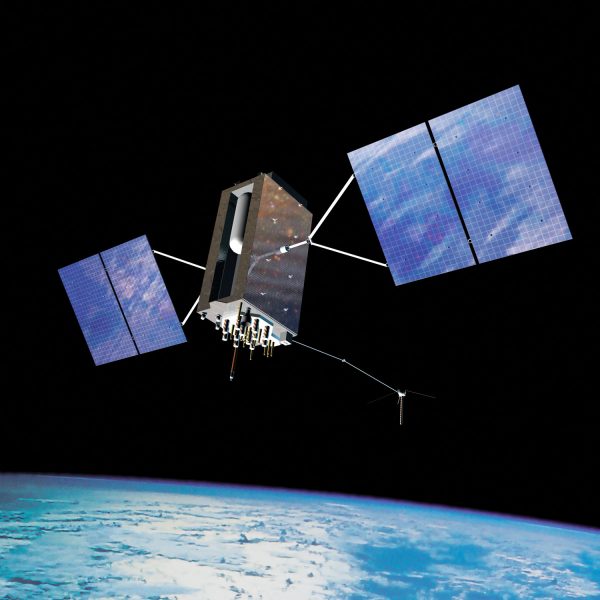
Westwood One, Premiere, Skyview Networks, et al. will be changing their satellite from AMC-8 at 139° W to AMC-18/SES-11 at 105° W longitude. More from AMC8transition.com. There are several considerations for this move:
- Dish design and two-degree compliance
- Obstacle clearance
- Transponder frequencies
- Timing
Two degree compliance is going to be an issue for many stations. Those old 2.4 and 2.8 meter mesh dishes are going to have issues with 105º West because that is a very crowed part of the sky. From New York, it looks something like this:
| Satellite | Longitude | Inclination | Azimuth | Elevation | Distance |
| TELSTAR 12 (ORION 2) | 109.21° W | 0.491° | 227.46° | 31.09° | 38596.91 km |
| TELSTAR 12 (ORION 2) | 109.21° W | 0.491° | 227.46° | 31.09° | 38596.91 km |
| MSAT M1 | 107.72° W | 7.430° | 231.14° | 38.16° | 38011.55 km |
| ANIK G1 | 107.33° W | 0.013° | 225.25° | 31.96° | 38518.62 km |
| ANIK F1 | 107.31° W | 0.020° | 225.22° | 31.95° | 38513.76 km |
| ANIK F1R | 107.28° W | 0.052° | 225.22° | 32.02° | 38510.37 km |
| ECHOSTAR 17 | 107.11° W | 0.019° | 225.01° | 32.08° | 38503.29 km |
| AMC-15 | 105.07° W | 0.025° | 222.76° | 33.28° | 38400.67 km |
| AMC-18 | 104.96° W | 0.027° | 222.64° | 33.34° | 38400.16 km |
| GOES 14 | 104.66° W | 0.198° | 222.21° | 33.38° | 38394.57 km |
| AMSC 1 | 103.44° W | 9.810° | 228.37° | 43.31° | 37616.42 km |
| SES-3 | 103.01° W | 0.041° | 220.41° | 34.42° | 38307.12 km |
| SPACEWAY 1 | 102.90° W | 0.032° | 220.25° | 34.43° | 38299.87 km |
| DIRECTV 10 | 102.82° W | 0.017° | 220.17° | 34.51° | 38292.86 km |
| DIRECTV 12 | 102.78° W | 0.035° | 220.12° | 34.50° | 38292.93 km |
| DIRECTV 15 | 102.71° W | 0.009° | 220.05° | 34.56° | 38290.50 km |
| SKYTERRA 1 | 101.30° W | 3.488° | 219.07° | 36.33° | 38131.32 km |
| DIRECTV 4S | 101.19° W | 0.011° | 218.24° | 35.35° | 38228.26 km |
| DIRECTV 9S | 101.15° W | 0.014° | 218.18° | 35.36° | 38228.57 km |
| SES-1 | 101.00° W | 0.016° | 218.02° | 35.45° | 38217.56 km |
| DIRECTV 8 | 100.87° W | 0.036° | 217.88° | 35.54° | 38211.02 km |
Generally speaking, dishes need to be 3.7 meters (12.14 feet) or larger to meet the two-degree compliance specification. For many, this means replacing the current dish. This is especially true for those old 10-foot aluminum mesh dishes that were very popular in the 90s because of the TVRO satellite craze.
If the existing dish is acceptable, then the next issue may be obstacle clearance. Generally speaking, the 105-degree west slot (south of Denver) will be easier to see that the 139-degree west slot (south of Honolulu) for much of the United States. Still, there may be trees, buildings, hills, etc in the way. Site surveys can be made using online tools (dishpointer.com) or smartphone apps (dishalign (iOS) or dishaligner (Android)). I have found that I need to stand in front of the dish to get the best idea of any obstacles. While you are there, spray all the dish-holding hardware with penetrating oil like WD-40, Rostoff, or something similar. Most of these dishes have not moved since they were installed, many years or decades ago.
Transponder frequencies will not be the same, so when the dish is aligned to the new satellite, those frequencies will need to be changed. The network satellite provider will furnish this information when it becomes available. This generally requires navigating around various menu trees in the satellite receiver. Most are fairly intuitive, but it never hurts to be prepared.
The window of opportunity is from February 1, 2017 (first day of AMC-18) until June 30, 2017 (last day of AMC-8). Of course, in the northern parts of the country, it may not be possible to install a new dish in the middle of winter. It may also be very difficult to align an existing dish depending on how bad the winter is. Therefore, the planning process should begin now. A quick site evaluation should include the following:
Network Satellite Receive Location Evaluation
|
Satellite: |
Satellite Location: |
||
|
Dish is 2°compliant? (Y/N) |
Distance to receiver location: |
||
|
Dish Latitude: |
Dish Longitude: |
||
|
Dish Azimuth (T): |
Dish Azimuth (M) |
||
|
Dish Height AGL: |
Dish Elevation: |
||
|
Observed Obstacles: (permanent or removable? Owned or not owned?) |
Comments: |
A .pdf version is available here. Based on that information, a decision can be made on whether or not to keep the old dish or install a new one. We service about 25 studio locations and I am already aware of three in need of dish replacement and two that have obstructive trees which will need to be cut. This work cannot start too soon.


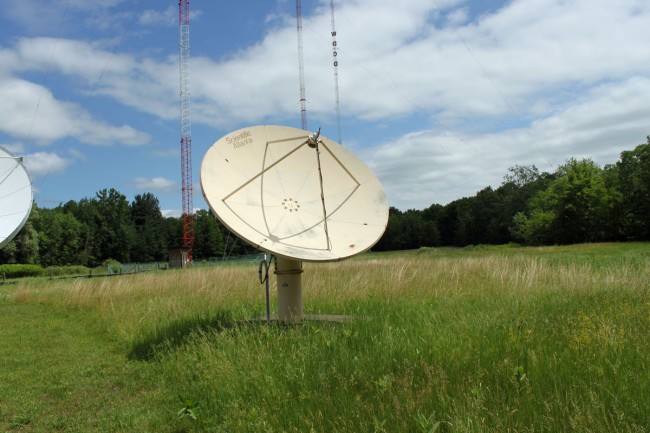
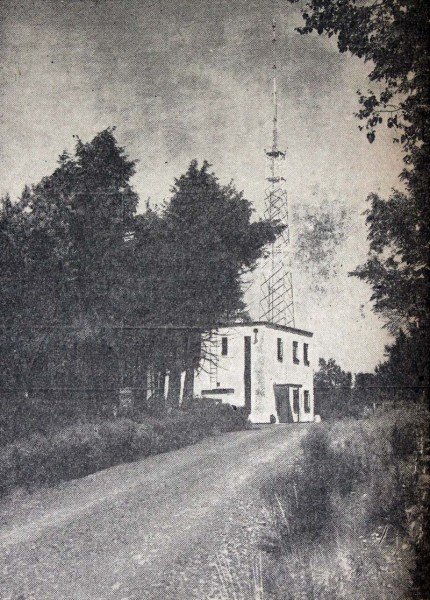
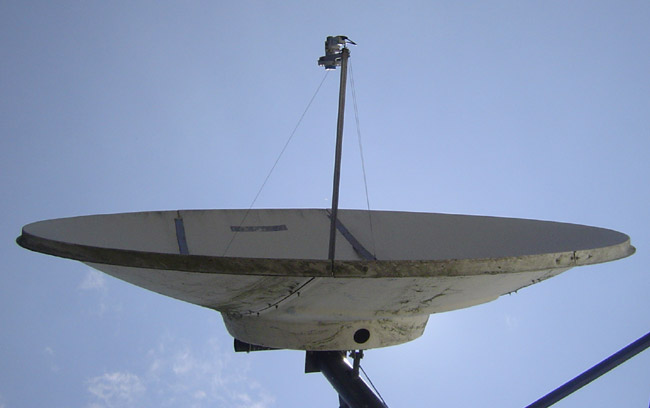
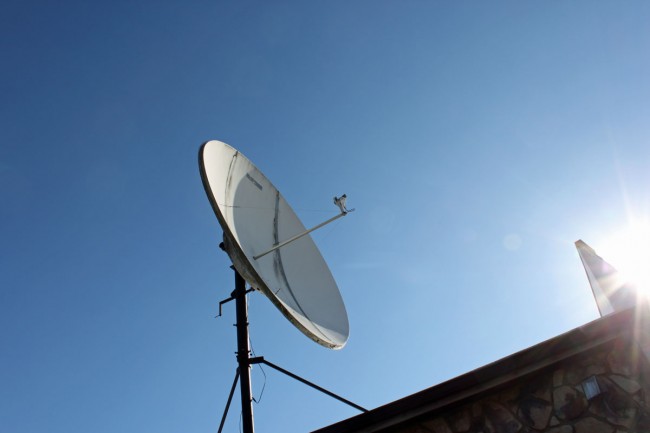
As a DSNG (TV satellite truck) operator, I’d like to weigh in here. The situation, to me, doesn’t seem as drastic as Paul is making it out to be. Please note that I do not have any experience with downlinking radio signals on C-band. I have only worked with TV signals. However, the principles are the same. For starters, I don’t believe that there is a two-degree compliance rule for receive dishes- I have only heard about this rule when it comes to re-certifying some of the older uplink trucks- when you are sending a signal, it is much more important to be focused with your signal. At one point in the early days of KU-band uplinking the KU-band satellites were not spaced as closely. As new satellites were added the FCC put in the two degree requirement for uplinks. For a while the FCC would certify older uplink dishes with “ears” on them in an effort to bring them into compliance but I don’t believe that these dishes can be certified these days. I’m not sure if this was ever the case with C-Band uplinking.
While the sky does look crowded with satellites near the AMC-18 location, the nearest C-band satellites are at 103 degrees and 107.3 degrees- two degrees below and more than two degrees above the location of AMC-18. The other satellites are Ku-band, weather satellites or navigation satellites and would not even be detected by properly operation C-band equipment. It appears that the radio networks on AMC-8 that I find listed on lyngsat.com are using digital modulation very similar to what we use in the TV DSNG world. This type of digital uplinking is very robust and resistant to interference. Even on the oldest, most broadly focused dish you can find I can’t imagine that there would be interference from adjacent satellites. Looking at the signals on the adjacent satellites, I find mostly very wide digital carriers, and the radio ones I see on AMC-8 are quite narrow. This also virtually guarantees that the receiver for the radio signals, very narrowly tuned, will not even detect these wide carriers. Remember, the received satellite signals on your desired satellite are quite weak. Signals from a satellite two degrees either way will be exponentially weaker, assuming a properly peaked receive dish.
The FCC has long had a process allowing operators to license receive-only earth stations for C-band and Ku-band. In fact, the same form used to license transmitting earth stations has the option on it to license a receive-only earth station. You have to specify the antenna manufacture and model which would be subject to the 2-degree rule. The advantage to licensing a receive station is that you would get your downlink entered into the FCC database which is then used by consultants during inference studies. This affords your receive antenna the same measure of protection that a fixed transmit/receive antenna would have. Very few television broadcasters license their receive antennas, and I am not sure why. I have never heard of any radio broadcaster who licensed theirs although there may be a few out there.
A point of clarification. For receive-only earth stations, the process is called registration not licensing. It requires frequency coordination as would a fixed transmit earth station. It’s all done on FCC form 312.
Regarding the two degree compliance, those are the directions from the satellite carriers. You are correct, on either side of AMC-18 are KU band satellites, but that can change at some point. I always found it better to overbuild then underbuild.
Also, forgot to mention, in the Northeast and the snow belt, remember to install a dish cover. AMC-18 has a much higher elevation angle, which will mean the dish will be a snow catcher.
I’m not in the business, but some of the questions in the FAQ are entlightening. Here’s the “we’re cheap bastard questions”:
11. Will the network distribution companies contribute money toward my efforts to cut down trees or to buy or relocate dishes?
Each affiliate should pay its own expenses. We realize the timing is not ideal, but affiliates should be able to budget this for 2017.
12. Can’t the commercial radio industry just stay where it is now, at 139 West Longitude, until the radioadvertising market gets better and radio stations have more cash?
We don’t have that luxury. AMC-8 has exceeded its design life. Eventually, SES, the owner of AMC-8, will turn off the satellite. Network programming would go silent and would stay that way. AMC-8 will NOT be replaced at 139 West, so we need to plan for the demise of AMC-8 now.
14. Can’t we just move all US commercial network programming distribution to the internet?
Not even cutting and pasting that answer…
And then the “we’re cheap, but we own everything, can’t we throw a tantrum?” question:
13. Can’t the US commercial radio networks use their market power to force one of the satellite companies to put a new satellite at 139 West?
No. The entire US commercial radio network industry takes up 77 MHz of satellite bandwidth. This is about 9% of the bandwidth of one 24-transponder C-band satellite, or about 0.4% of the total C-band bandwidth serving North America. That is not a lot of market power. Satellite operators like to see that 60% to 80% of their transponders are leased before they launch a new satellite.
Regarding the 2 degrees question, that’s in there too:
‘The 139 West location is “the last house at the end of the street” so there is no neighboring satellite to the immediate west. This means that some affiliates whose dishes are damaged, distorted or are too small can get away with purposely mis-aiming their dishes a little too far to the west to avoid interference from the nearest easterly neighbor satellite at 137 West.
At 105 degrees West, we do not have this luxury. The nearest easterly C-band satellite is at 103 West, only 2 degrees away. The nearest westerly C-band satellite is at 107.3 West, only 2.3 degrees away.
The networks strongly urge all affiliates to install a dish that is 2-degree compliant (generally this means 3.7 meters diameter or larger) to make sure you can reject interference from these two adjacent satellites. This may require you to replace your downlink dish even if it is in good condition,
but is too small.’
Fascinating stuff! I was a bit blown away the first time I was on a plane that had a dish that tracked DirecTV from taxi to landing…
@valvashon – I’d love a pointer to some pictures/videos of one of these sat trucks. Somewhere there must be a nerdy engineer that loves to show off how it works and explain the setup process from picking where to park to lining the dish up.